Defensible GenAI Governance for the Modern Enterprise
Kovrr helps organizations operationalize GenAI governance with measurable structure and accountability. The AI Governance suite unifies visibility into GenAI use, regulatory compliance assurance, board reporting, and continuous oversight across the AI lifecycle. With Kovrr, leaders can identify where GenAI operates, evaluate readiness, quantify exposure, and manage evolving regulatory obligations confidently.
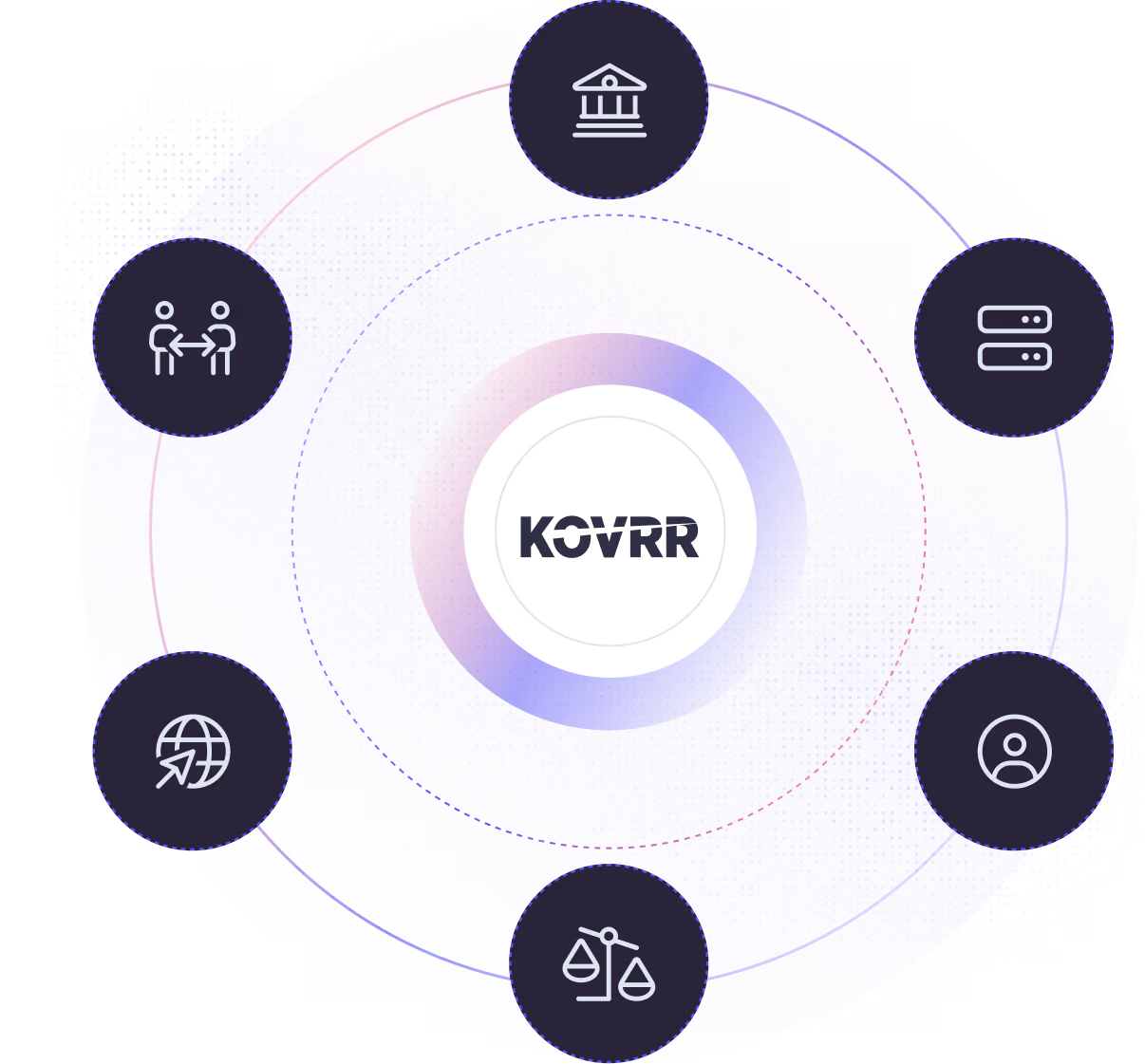
Fortifying Resilience in the Era of GenAI Risk
Strengthen Oversight and Accountability
AI responsibilities often span multiple departments, creating ambiguity over ownership and control. Kovrr’s AI Governance suite helps GRC teams define structures, assign accountability, and document oversight in ways that satisfy regulators and stakeholders while enabling leadership to make informed, defensible decisions.
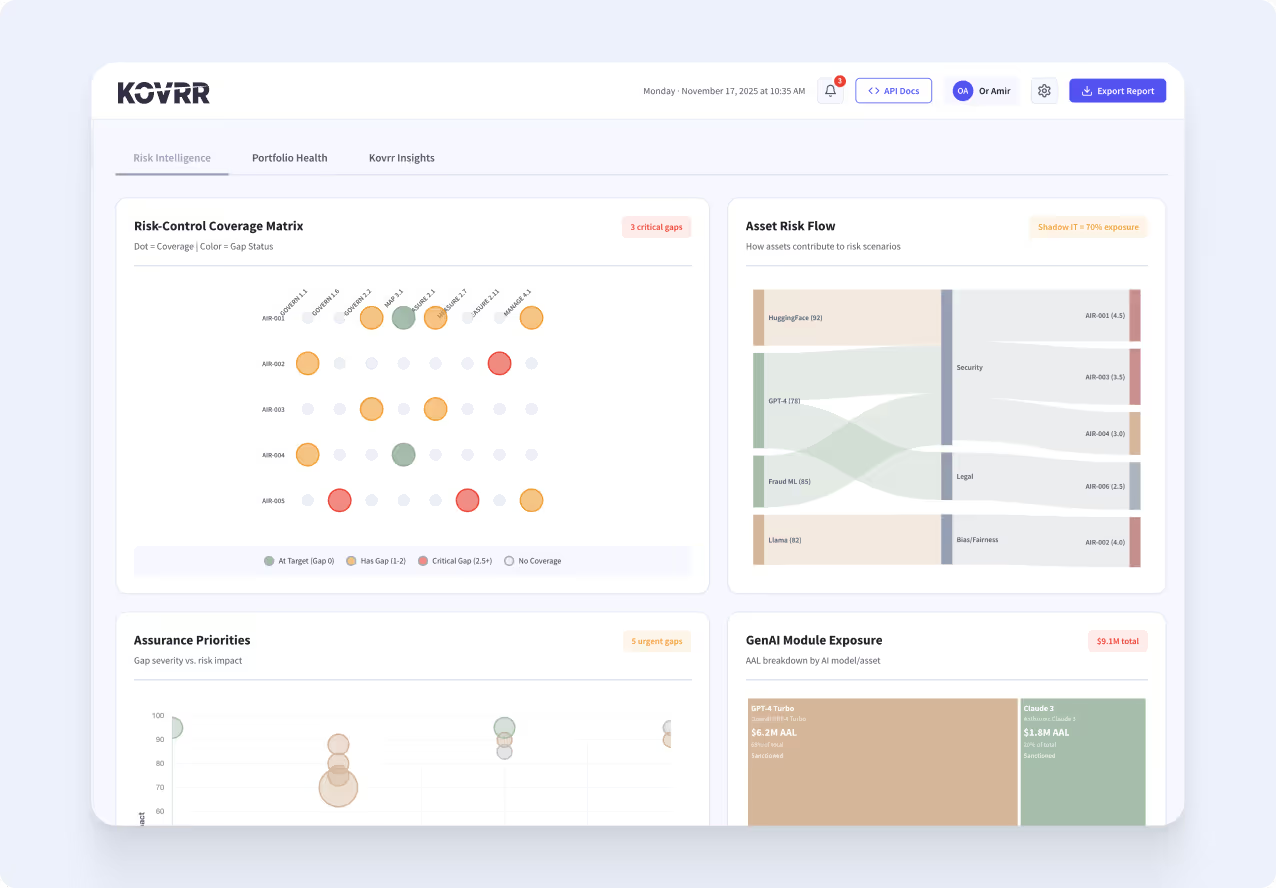
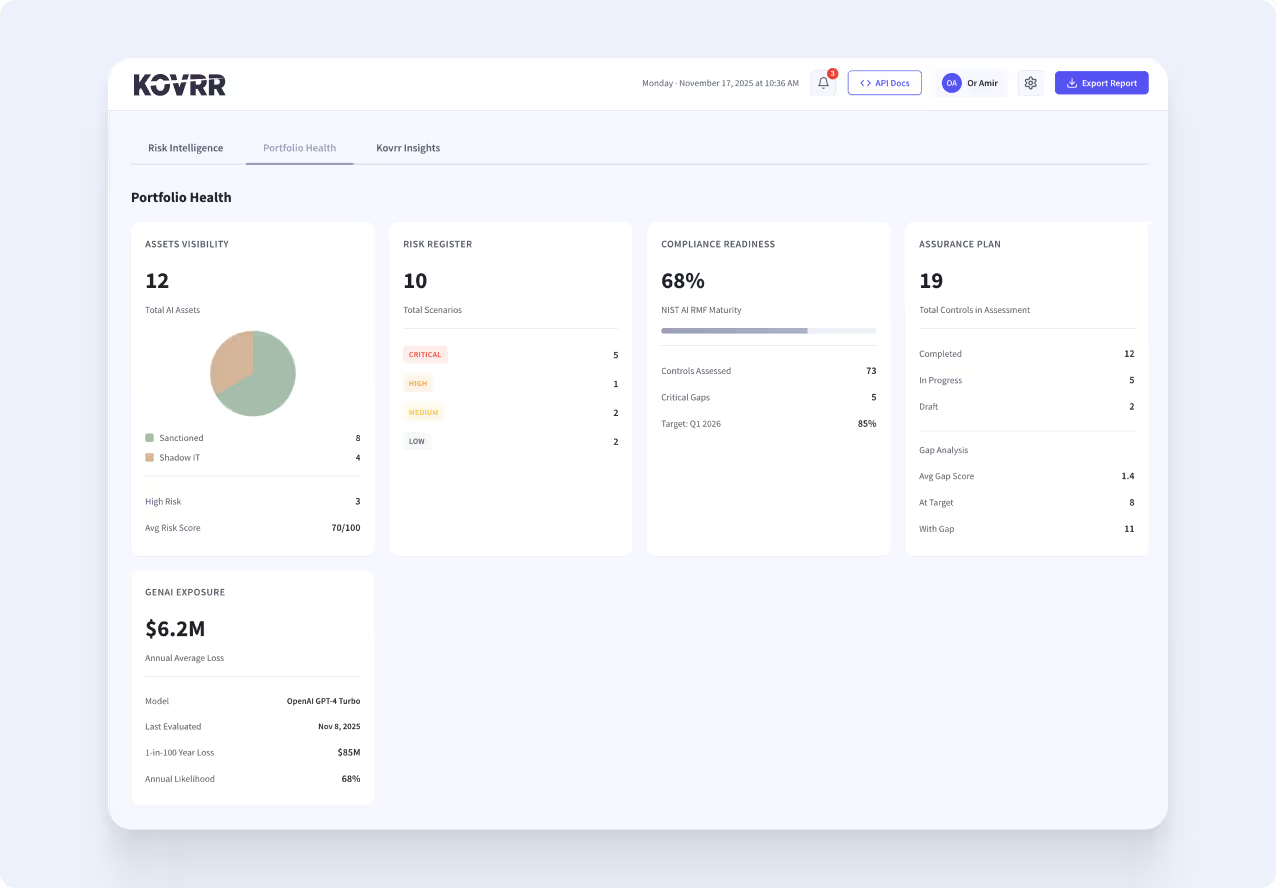
Build Continuous Visibility and Control
GenAI systems evolve daily, often beyond the reach of traditional compliance programs. Kovrr delivers ongoing visibility into where AI operates, what data it interacts with, and how safeguards perform, helping teams detect risk early, maintain transparency, and keep governance aligned with change.
Quantify and Prioritize What Matters Most
Governance gains credibility when results are measurable. The AI Governance suite connects maturity assessments with financial quantification, showing leaders which actions deliver the highest return in exposure reduction. This integration turns governance into a strategic process for prioritizing resources and demonstrating program impact.
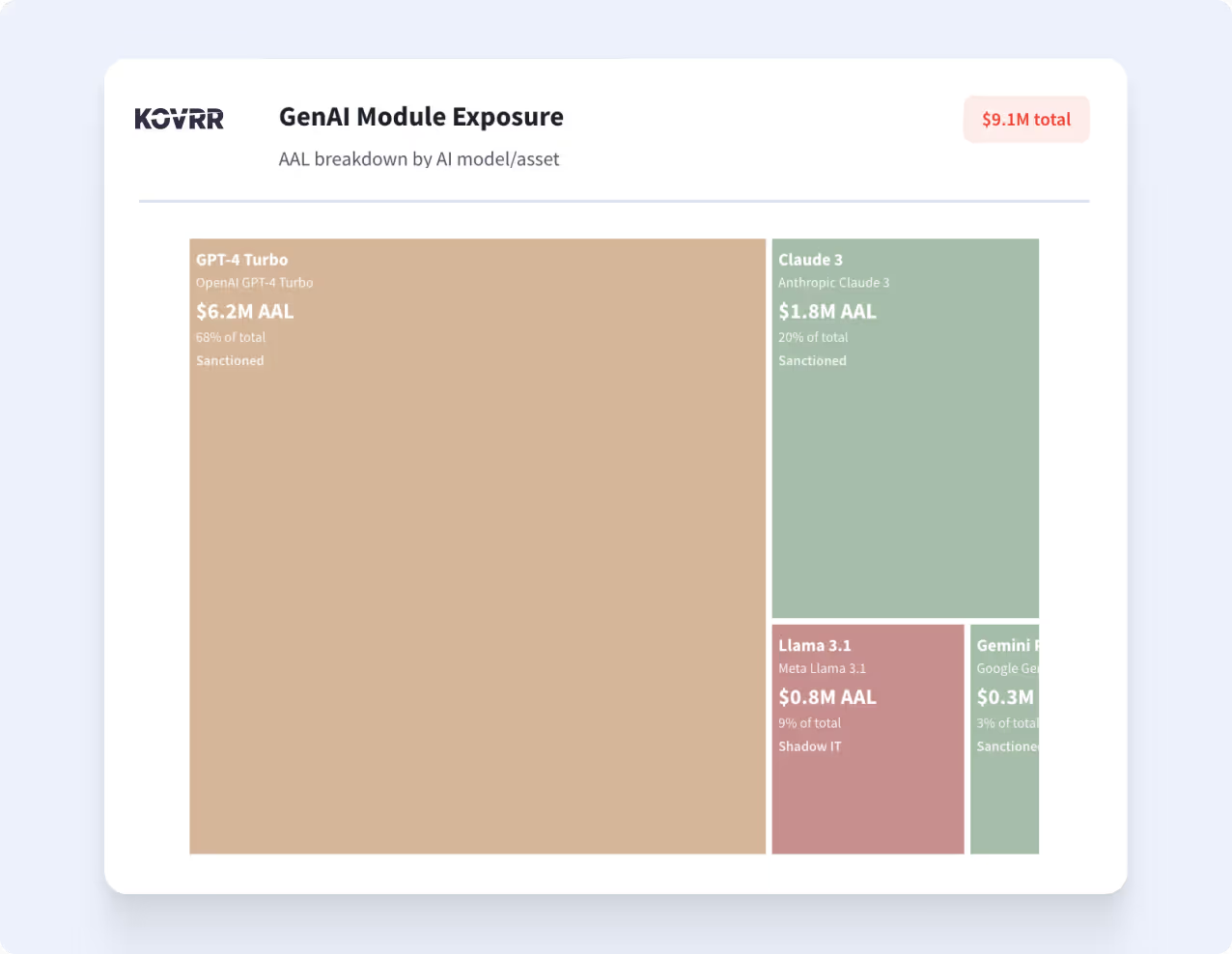
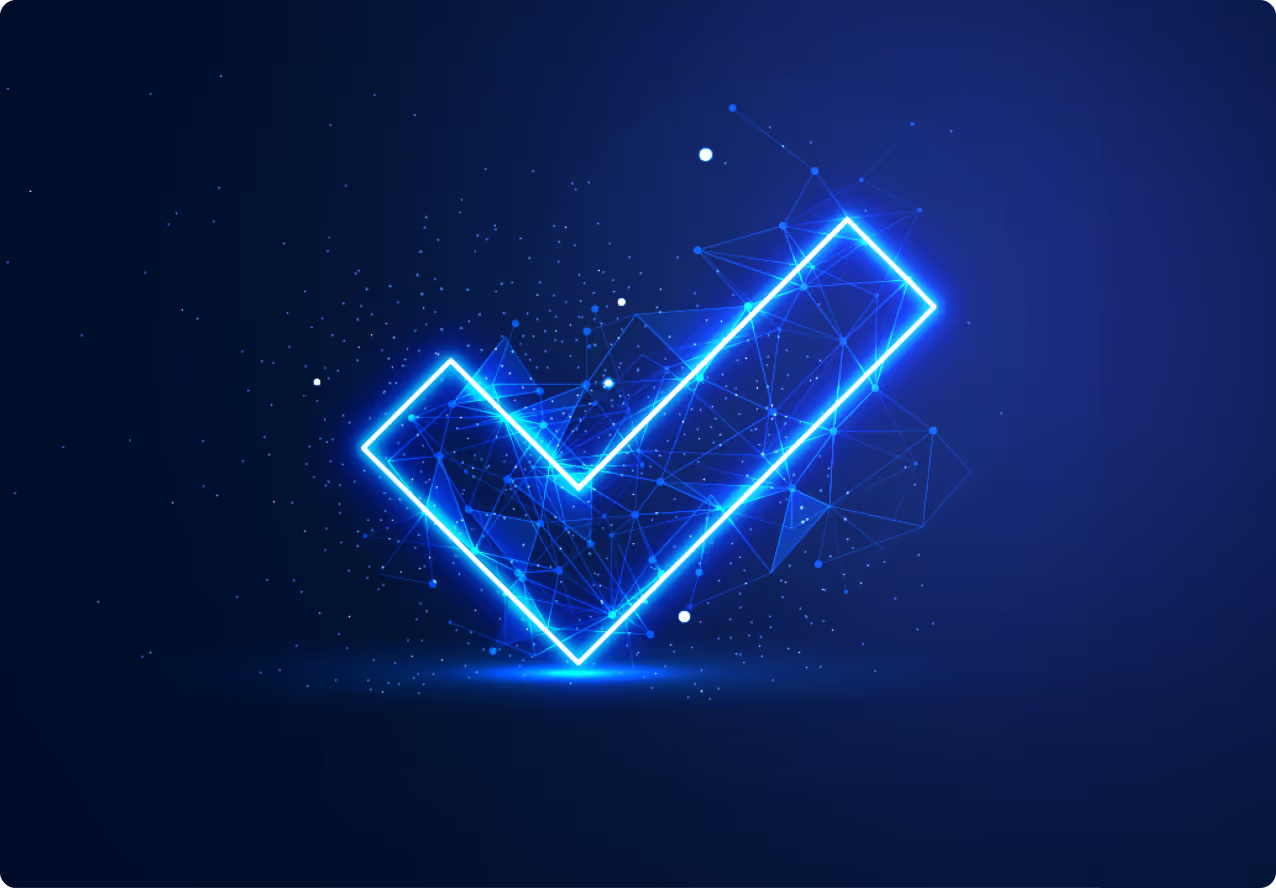
Demonstrate Compliance and Earn Trust
Regulators and customers expect proof that GenAI is being managed responsibly. Kovrr aligns governance practices with frameworks such as NIST AI RMF and ISO 42001, and supports compliance with the EU AI Act. These capabilities enable organizations to demonstrate readiness, reinforce trust, and maintain confidence among boards, regulators, and business partners.


Gain visibility into every sanctioned, shadow, and embedded GenAI system across the organization. Eliminate blind spots and map data interactions to maintain compliance through transparent, continuous discovery.
Evaluate governance and control maturity with the AI Compliance Readiness module, identifying readiness gaps against frameworks such as NIST AI RMF and ISO 42001 and regulations like the EU AI Act.
Translate AI assessment results into measurable improvement plans with the AI Assurance Plan. Rank mitigation initiatives according to ROI, align safeguards with exposure, and build a defensible roadmap for stronger oversight.
Maintain oversight through modules such as AI Risk Quantification and AI Third-Party Risk Monitoring, ensuring governance extends across the entire lifecycle and adapts as your GenAI ecosystem grows.


“Before Kovrr, we didn’t even know how many GenAI tools were in use. Now we have full visibility and clear ownership.”
“The platform gave us a clear structure to prove compliance readiness across multiple regulations without manual tracking.”
“Our board reporting went from reactive summaries to data-backed insights. We can now speak confidently about GenAI exposure.”
AI Governance FAQs
Schedule a DemoWhat is GenAI governance?

AI governance is the framework of policies, safeguards, and accountability practices that ensure AI, including GenAI, is deployed responsibly and in compliance with regulations. Kovrr’s AI governance software supports this process through assessments that benchmark governance maturity and through risk quantification that translates results into financial and operational terms, helping organizations close oversight gaps, demonstrate accountability, and align AI adoption with enterprise goals.
Why is AI governance software becoming essential for enterprises?

AI adoption is accelerating across every business function, often faster than oversight can keep up. Without structured governance, organizations face greater exposure to compliance failures, bias, and operational disruption. GenAI governance software provides the foundation to manage these risks responsibly, defining accountability, maintaining transparency, and ensuring AI decisions align with business and regulatory objectives.
How does AI governance differ from traditional risk management?

Traditional risk management focuses on static, well-defined processes, while GenAI governance addresses a dynamic ecosystem where models evolve, data shifts, and accountability can blur. It emphasizes continuous monitoring, transparency, and ethical alignment alongside security and compliance, turning complex oversight into measurable, defensible management practices.
How can organizations measure the maturity of their AI governance programs?

Maturity is measured by how consistently and transparently GenAI safeguards are applied across the enterprise. Kovrr enables organizations to assess maturity through frameworks such as NIST AI RMF and ISO 42001 while supporting compliance with the EU AI Act. The AI Compliance Readiness module evaluates control effectiveness, risk ownership, and policy coverage, helping leaders identify gaps, prioritize improvements, and demonstrate accountability to stakeholders.
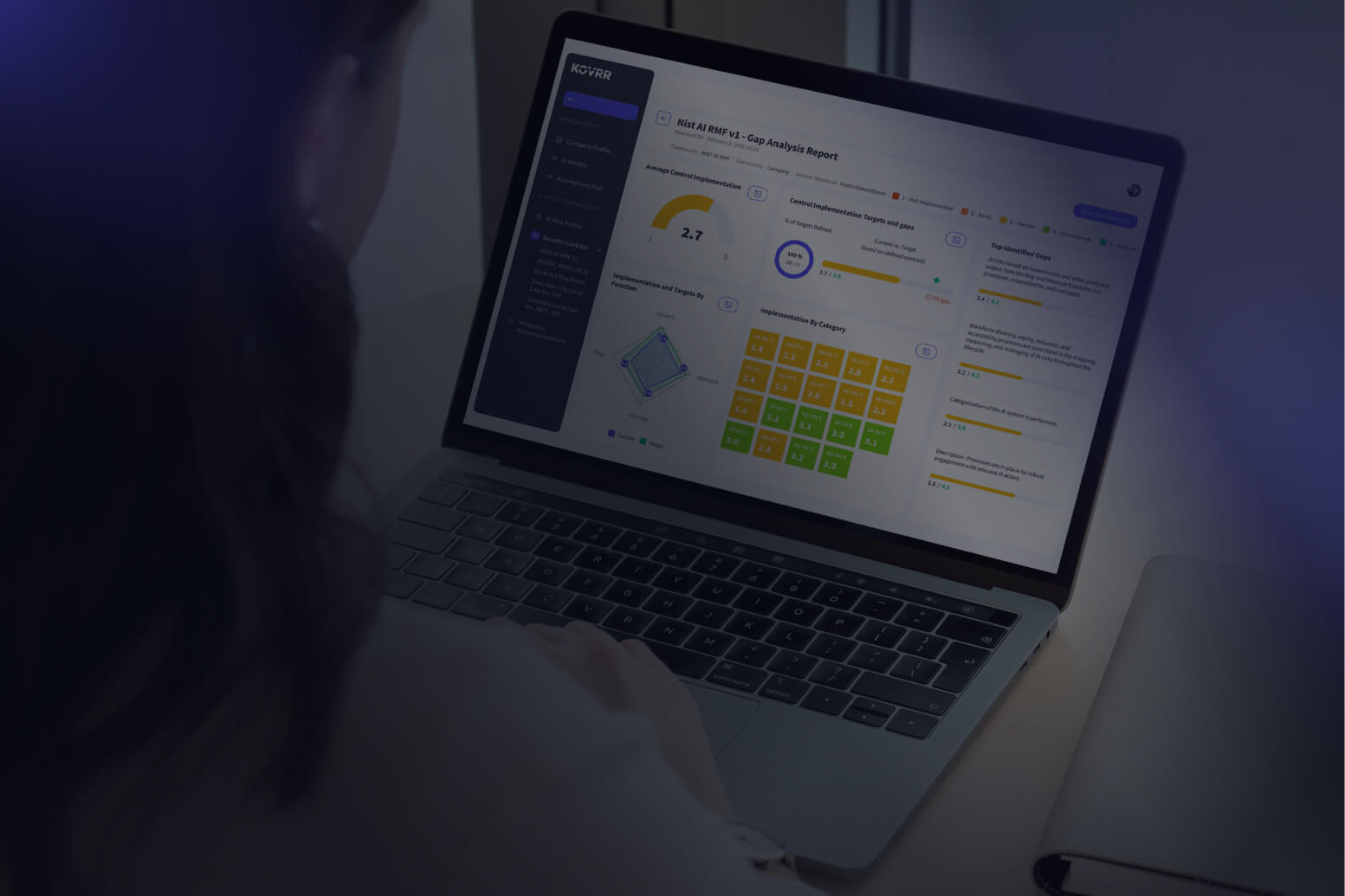
.jpg)
.jpg)
